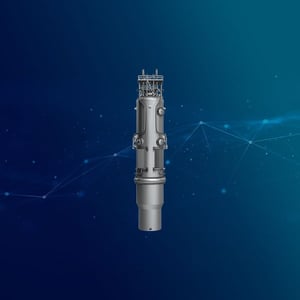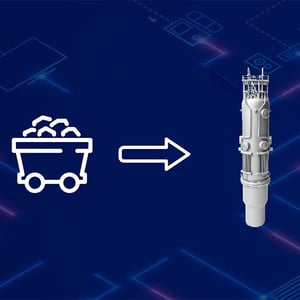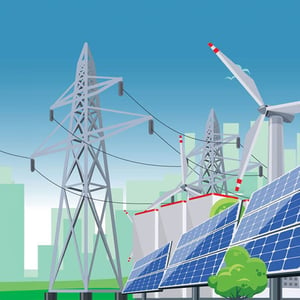
Nuclear Power and Safety
Introduction
When it comes to nuclear power, safety is often the primary concern for many individuals. While the benefits of nuclear energy, such as its low greenhouse gas emissions and high energy output are well-known, it's crucial to address the common concerns surrounding its safety. Here, we break down the key aspects of nuclear safety and how modern advancements have made nuclear power one of the safest energy sources available.
Understanding Regulatory Oversight
One of the most significant advancements in nuclear safety is the rigorous regulatory oversight that ensures nuclear plants operate within strict safety parameters. In the United States, the Nuclear Regulatory Commission (NRC) governs the nuclear industry, enforcing regulations designed to protect public health and safety.
The NRC's role is critical in maintaining the integrity and safety of nuclear energy production. They utilize advanced technologies and methodologies to monitor plant operations in real-time, allowing for rapid response to any anomalies. Inspectors conduct both announced and unannounced inspections to verify compliance with safety protocols. Additionally, the NRC engages in extensive safety assessments to evaluate potential risks and implement measures to mitigate them. This comprehensive approach not only helps protect the environment, but also ensures the safety of the communities living near these facilities.
Emergency Preparedness
Preparedness for potential emergencies is fundamental to nuclear safety. Every nuclear facility develops a comprehensive emergency plan in collaboration with local, state, and federal authorities. These plans include detailed procedures for evacuation, sheltering, and communication during emergencies, and they define specific roles and responsibilities for plant personnel and emergency responders to ensure a coordinated and efficient response.<
Regular drills are conducted to ensure both plant staff and local communities are prepared to respond effectively. These drills simulate various emergency scenarios, from minor to full-scale incidents, to test and refine response strategies. Additionally, public awareness and education campaigns are conducted to inform local residents about emergency procedures and how they can protect themselves during a nuclear incident.
The objective of these comprehensive and meticulously designed emergency plans is to minimize risk and ensure the safety and well-being of both the workforce and the surrounding communities.
Public Health and Environmental Safety
Public health and environmental safety are paramount in discussions surrounding nuclear energy. Nuclear power plants are designed with robust safety systems that mitigate the release of harmful materials into the environment. According to the World Nuclear Association, nuclear energy is among the lowest producers of greenhouse gas emissions when evaluated over the lifecycle of energy production. This is due to the lack of carbon emissions during electricity generation and the efficiency of nuclear power plants in comparison to fossil fuel-based energy sources.
While concerns about potential accidents remain, it's essential to note that nuclear incidents are incredibly rare. In fact, nuclear power has one of the lowest fatality rates per unit of electricity generated when compared to other energy sources such as oil, coal, and even renewable sources like wind and solar. Modern safety protocols and advancements in technology have played a significant role in making nuclear power one of the safest forms of energy production available today.
Innovations in Reactor Technology
Modern nuclear reactors are designed with numerous safety features that minimize the risk of accidents. Small modular reactors (SMRs), for instance, have several inherent safety advantages. SMRs use passive safety systems that can function without human intervention or external power sources. These reactors are designed to withstand extreme events, including natural disasters, without releasing harmful radiation. Additionally, SMRs have a much smaller physical footprint and a smaller fuel inventory, which further reduces the potential impact of any incidents.
NuScale’s SMR Technology
Our SMR technology exemplifies the advancements in safety within the field of nuclear energy. Our NRC-approved comprehensive safety features offer a fully passive safety system design that ensures reactors will safely shut down and self-cool indefinitely. This system operates without the need for operator or computer action, AC or DC power, or additional water—a first for light water reactor technology.
Our robust safety case led to the approval of a methodology for an Emergency Planning Zone (EPZ) in the U.S. that only extends to the site boundary, a significant improvement over the conventional 10-mile radius of current U.S. nuclear energy plants. This enhancement not only increases the potential for nearby location of process heat users, businesses, and residences, but also significantly reduces the costs associated with executing a plant's emergency plan.
The plants powered by NuScale SMR technology incorporate seven layers of protection to ensure the highest standards of safety for people and the environment.
Additionally, NuScale Power Modules ™ are installed below grade in a highly robust building designed to withstand aircraft impact and ground motion from earthquakes at levels beyond the requirements of current nuclear energy plants. The NuScale design specifically addresses and eliminates safety issues found in past nuclear energy incidents. Due to the high level of safety in our design, no evacuation, sheltering, distribution of stable iodine, medical management, or restriction of contaminated food consumption is required as precautionary or urgent protective actions in the unlikely event of a severe incident.
Conclusion
Nuclear power plays a crucial role in meeting our future energy needs while combating climate change. Through stringent regulatory systems, innovative reactor designs, comprehensive emergency preparedness, and lessons learned from past incidents, the nuclear industry constantly advances toward enhanced safety. Understanding these mechanisms helps alleviate public concerns and highlights the significant strides made to ensure nuclear power remains safe and reliable.
By staying up to date with the latest information and technological developments, we can appreciate the role of nuclear energy in our clean energy future.



